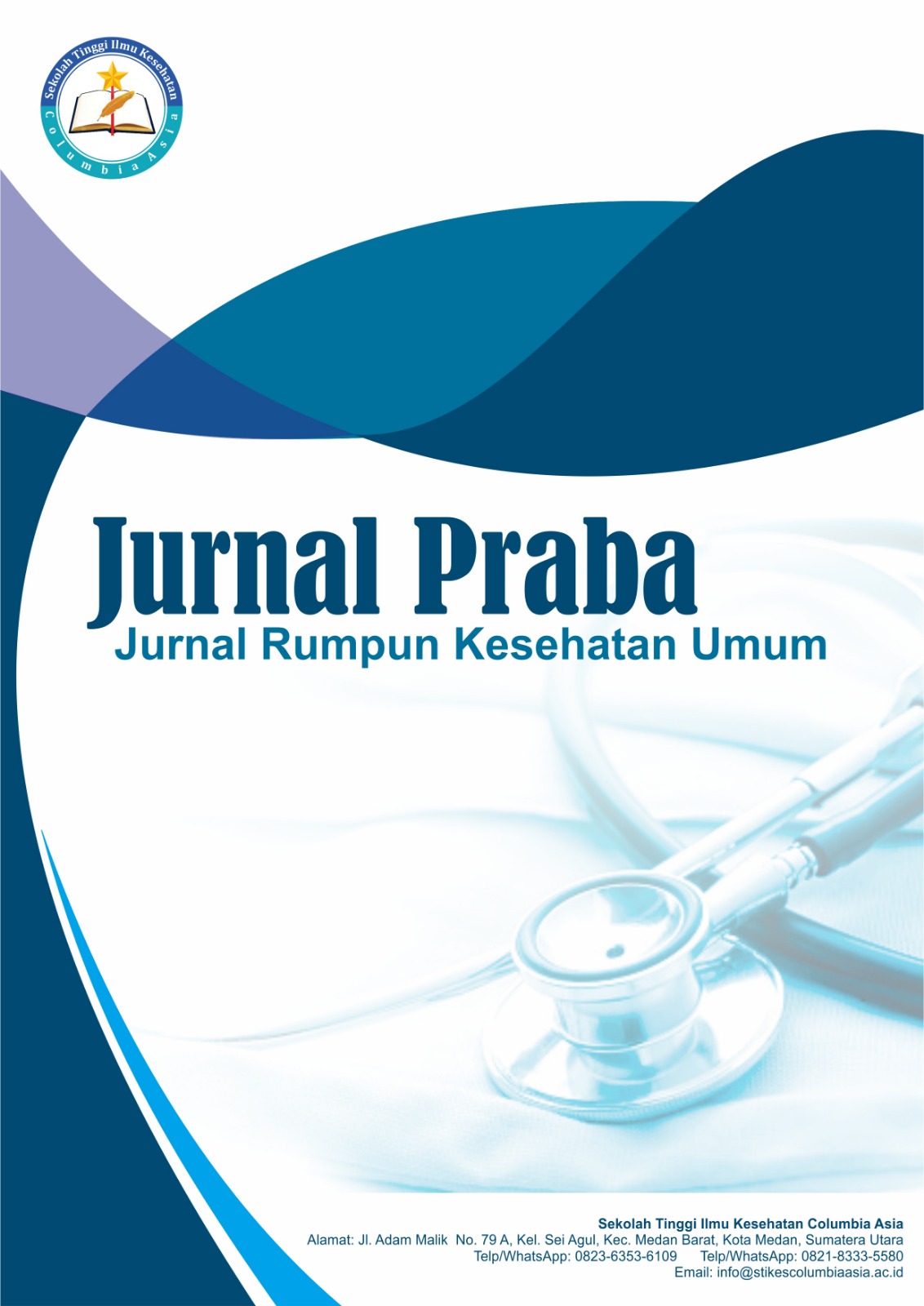Analysis Of The Influence Of Perceived Usefulness, Subjective Norm And Perceived Ease Of Use On Usage Behavior Through Behavioral Intention On The Acceptance Of Rme In Rsud Mayjend H.M. Ryacudu North Lampung
DOI:
https://doi.org/10.62027/praba.v3i2.344Keywords:
Acceptance Model, Perceived Usefulness, Subjective Norm, Perceived Ease of Use, Usage BehaviourAbstract
In the era of digital transformation, the healthcare sector is required to adapt to technological developments, especially in terms of recording and managing patient medical data. Electronic Medical Records (RME) is a strategic solution that can improve efficiency, accuracy, and integration of health services. The implementation of RME in health facilities faces a number of challenges. Infrastructure readiness, limited human resources (HR), and resistance to change are factors that affect the adoption of this technology. to analyze the extent to which Perceived Usefulness, Subjective Norm and Perceived Ease of Use affect Usage Behaviour through Behavioural Intention as an intervening variable. this research method is quantitative explanatory research. The sample in this study were care givers (PPA) at the Mayjend H.M. Ryacudu Hospital, North Lampung, totaling 140 respondents. Data collection using questionnaires and descriptive analysis techniques using the SEM-PLS method. the results showed Perceived Usefulness, Subjective Norm and Perceived Ease of Use influence directly and indirectly on Usage Behaviour through Behavioural Intention as an intervening variable on the acceptance of RME at Mayjend H.M. Ryacudu Hospital. These results in theoretical implications support the theory and previous research. Managerially, it is expected to provide input for the management of RSUD Mayjend H.M. Ryacudu to understand the factors that influence the acceptance of RME by medical personnel, so that technology adoption strategies can be more effective, in improving and improving the quality of technology and systems that support the use of RME.References
Ajzen, I. (1991). The Theory of Planned Behavior. Organizational Behavior and Human Decision Processes, 50(2), 179-211.
Blandford, A., et al. (2016). Designing Health IT for Health Care Professionals: A Human-Centered Approach. ACM Press.
Brown, A., & Green, A. (2019). Influences on Electronic Health Record Usage Among Healthcare Professionals: A Quantitative Study in the UK. BMC Health Services Research, 19(3), 431-444.
Chen, X., & Huang, S. (2021). Factors Affecting the Use of Healthcare Information Systems in Developing Countries: The Case of India. International Journal of Medical Informatics, 112(4), 11-24.
Davis, F. D. (1989). Perceived Usefulness, Perceived Ease of Use, and User Acceptance of Information Technology. MIS Quarterly, 13(3), 319-340.
Delone, W. H., & McLean, E. R. (1992). Information Systems Success: The Quest for the Dependent Variable. Information Systems Research, 3(1), 60-95.
Firdaus, M. M. (2021). Metodologi Penelitian Kuantitatif; Dilengkapi Analisis Regresi Ibm Spss Statistics Version 26.0. CV. Dotplus Publisher. https://books.google.co.id/books?id=lJ8hEAAAQBAJ
Fishbein, M., & Ajzen, I. (1975). Belief, Attitude, Intention, and Behavior: An Introduction to Theory and Research. Addison-Wesley.
Ghozali, I. (2018). Aplikasi Analisis Multivariate dengan Program IBM SPSS 25. Badan Penerbit Universitas Diponegoro.
Goh, T., & Tan, C. (2020). The Impact of Social Influence on Healthcare Information Systems Acceptance in Hospitals. Healthcare Technology Letters, 7(6), 302-310.
Hao, Z., Liu, X., & Xie, S. (2020). Investigating the Factors Affecting the Adoption of Electronic Health Record Systems: A Study of Public Hospitals in China. Healthcare Management Review, 45(1), 34-42.
Holden, R. J., & Karsh, B. T. (2010). The Technology Acceptance Model: Its Past and Its Future in Health Care. Journal of Biomedical Informatics, 43(1), 159-172.
ISACA. (2012). COBIT 5: A Business Framework for the Governance and Management of Enterprise IT. ISACA.
M. L. Tan, & J. L. Soh, & T. K. Tan. (2018). Digital Maturity Models (DMM) in Healthcare and Beyond. International Journal of Medical Informatics.
Mathis, R. L., & Jackson, J. H. (2013). Human Resource Management. Cengage Learning.
McKinsey & Company. (2001). The 7S Framework. McKinsey & Company.
Morrell, K., & Fildes, A. (2017). The Role of Subjective Norms in Technology Adoption: Healthcare Context. Journal of Health Information Management, 33(2), 115-130.
O'Brien, J. A., et al. (2019). Introduction to Information Systems. McGraw-Hill.
Sharma, R., & Yetton, P. (2007). The Contingent Effects of Management Support and Task Interdependence on Successful Information Systems Implementation. MIS Quarterly, 31(4), 533-556.
Sukoco, B. M., & Huda, M. (2016). The Influence of Facilitating Conditions and Social Influence on Technology Use in Health Systems. Journal of Technology in Health Care, 10(4), 347-358.
Sugiyono (2019). Metode Penelitian Kuantitatif, Kualitatif, dan R&D. Bandung : Alphabet.
Sugiyono. (2022). Metode Penelitian Kuantitatif. Bandung: Alfabeta.
Suryanto, A., et al. (2021). Factors Affecting the Adoption of Electronic Medical Records in Indonesian Hospitals. Health Informatics Journal, 27(3), 423-439.
Turban, E., Leidner, D., McLean, E., & Wetherbe, J. (2011). Information Technology for Management: Transforming Organizations in the Digital Economy (7th ed.). John Wiley & Sons.
Urbach, N., & Müller, B. (2012). The Updated DeLone and McLean Model of Information Systems Success (pp. 1–18). https://doi.org/10.1007/978-1-4419-6108-2_1
Van der Heijden, H. (2004). User Acceptance of Hedonic Information Systems. MIS Quarterly, 28(4), 695-704.
Venkatesh, V., & Davis, F. D. (2000). Perceived Usefulness and Usage of EHR Systems: Toward a Unified View. MIS Quarterly, 24(1), 115-139.
Venkatesh, V., & Davis, F. D. (2000). A Theoretical Extension of the Technology Acceptance Model: Four Longitudinal Field Studies. Management Science, 46(2), 186-204.
Venkatesh, V., & Bala, H. (2008). Technology Acceptance Model 3 and a Research Agenda on Interventions. Decision Sciences, 39(2), 273-315.
Venkatesh, V., Morris, M. G., Davis, G. B., & Davis, F. D. (2003). User Acceptance of Information Technology: Toward a Unified View. MIS Quarterly, 27(3), 425-478.
Wang, Y., & Shih, Y. (2017). Assessing the Role of Subjective Norms and Perceived Usefulness in EHR Adoption in the Healthcare Sector. Journal of Medical Systems, 41(5), 1-12.
Wang, Y., & Wang, J. (2017). Quality and User Satisfaction in Electronic Medical Records. Health Information Journal, 23(2), 107-120.
Downloads
Published
How to Cite
Issue
Section
License
Copyright (c) 2025 Jurnal Praba : Jurnal Rumpun Kesehatan Umum

This work is licensed under a Creative Commons Attribution-ShareAlike 4.0 International License.







